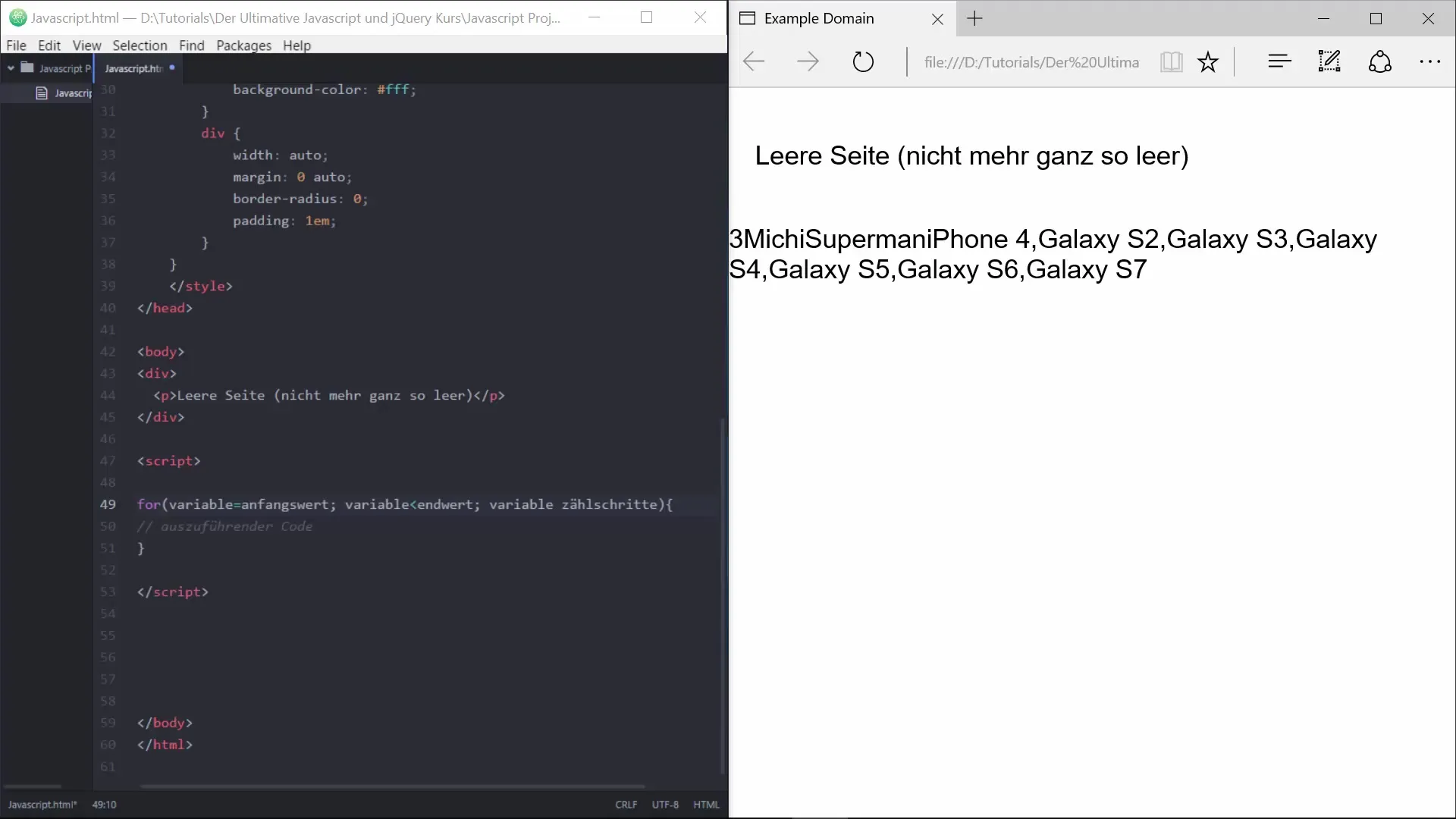Warm welcome to this in-depth tutorial on the so-called For loop, also known as the V-loop. In programming, a loop is a fundamentally important concept that allows you to execute a specific block of code multiple times without having to repeat it manually. If you want to use counters or perform continuous operations, the For loop is an effective tool. Let's dive into the syntax and application of For-loops together and explore how they work step by step.
Key insights
The For loop is used for repeated execution of a code block based on predefined conditions. It consists of three main components: the initial value, the end value, and the steps that modify the counter in the loop. Additionally, by cleverly setting the variables, we avoid the loop running indefinitely.
Step-by-step guide to the For loop
Definition of the For loop
A For loop is typically defined as follows: It starts with a counter variable, compares it with an end value, and sets the steps to continue the loop. The general syntax is as follows:
for (initialization; condition; increment) { // Code block that will be executed multiple times }
For a simple example, let's take a look at the definition of a counter variable.

Here, you first define the initial value of your counter variable, for example, at 0. In the implementation, it is important to ensure that the individual components of the For loop are correctly structured.
Example with a high counter variable
Let's count this counter from 0 to 9. In your For loop, you compare the counter with the value 10. That means the loop counts from 0 to 9. It is crucial to set the correct semicolons, as otherwise the syntax will not work.
In this example, you have already learned the basics of the For loop. It is important that the loop eventually ends to avoid unintended infinite loops.
Incorporating curly braces
Once you have set up the loop, you can write in curly braces what exactly should be executed in each iteration.
With this instruction, the counter value is displayed on your HTML page for each iteration.
When you run the script, you will see the output of counter values from 0 to 9. You can adjust the loop to increase the number of iterations or modify the counter step by step.
Using Break
If you want to better structure your output, you can also use a command like break to create specific line breaks. This can improve the readability of your output and create a clear separation between the counter values.

Inserting the break command makes it easier to create a line break when you output multiple values. You can now also experiment and, for example, set the number of loops by increasing the end value to 100.
Increasing the counter in larger steps
You can adjust your loop to increase the counter by larger amounts. Instead of increasing the counter by just 1, you could increase it by 5.

In doing so, you need to ensure that you adjust the condition: The loop ends as soon as the counter reaches 100. This means that the output of counter values occurs in steps of 5: 0, 5, 10 up to 95.
Using alternative counter variables
You are not limited to the term "counter" when using the For loop. You can use any variable. For example, you could use "count" instead of "counter" or even output a text like "Bart made a mistake" to demonstrate the loop.
By creatively adjusting the counter variables, you can use the For loop for a wide variety of applications, depending on what you want to use it for.
Outlook on the next steps
In this video, we covered the basic elements of the For loop and saw how to use it effectively to generate code block outputs. In the next video, we will look at functions and create our own functions, allowing us to go beyond the For loop.
Summary – The comprehensive tutorial on JavaScript For loops
In summary, For loops are a versatile way to execute code repeatedly. You have learned how to define the counter variable, set conditions, adjust steps, and improve outputs. With this basic knowledge, you are able to create more complex programs.
Frequently asked questions
What is a For loop?A For loop allows you to execute a block of code multiple times based on set conditions.
How do you set up a For loop?You define a start variable, a comparison condition, and an increment step in the loop.
What happens if the loop does not end?If no end condition is defined, this can lead to an infinite loop, which is generally not desired.
Can I freely choose the counter name?Yes, you can use any variable to count in the For loop.
How can I adjust the output of the loop?You can use curly braces to shape the output text, as well as use break commands for line breaks.


